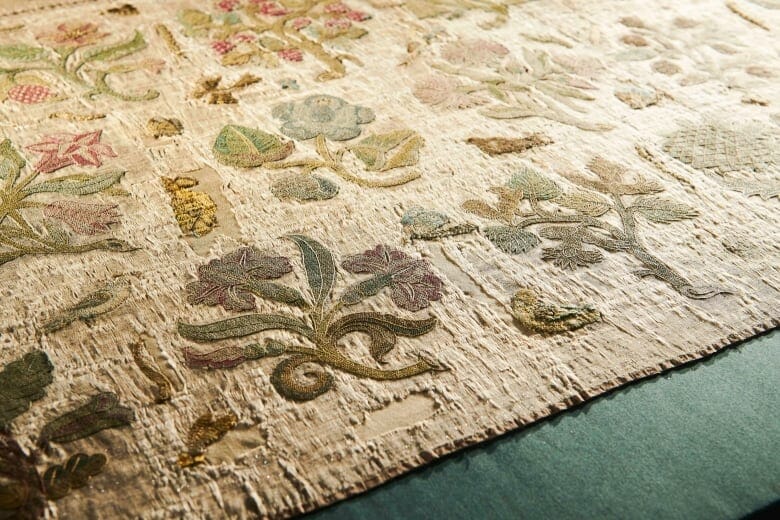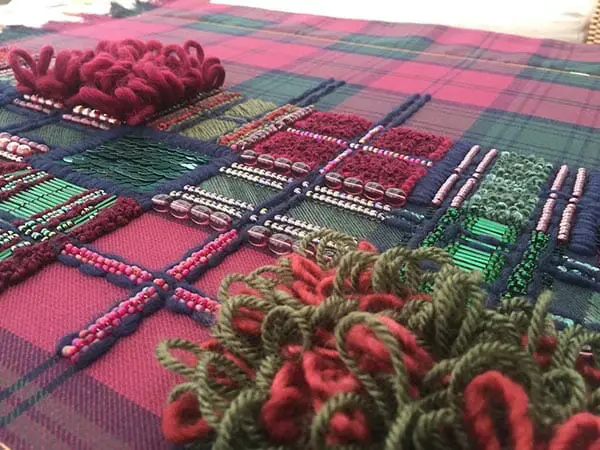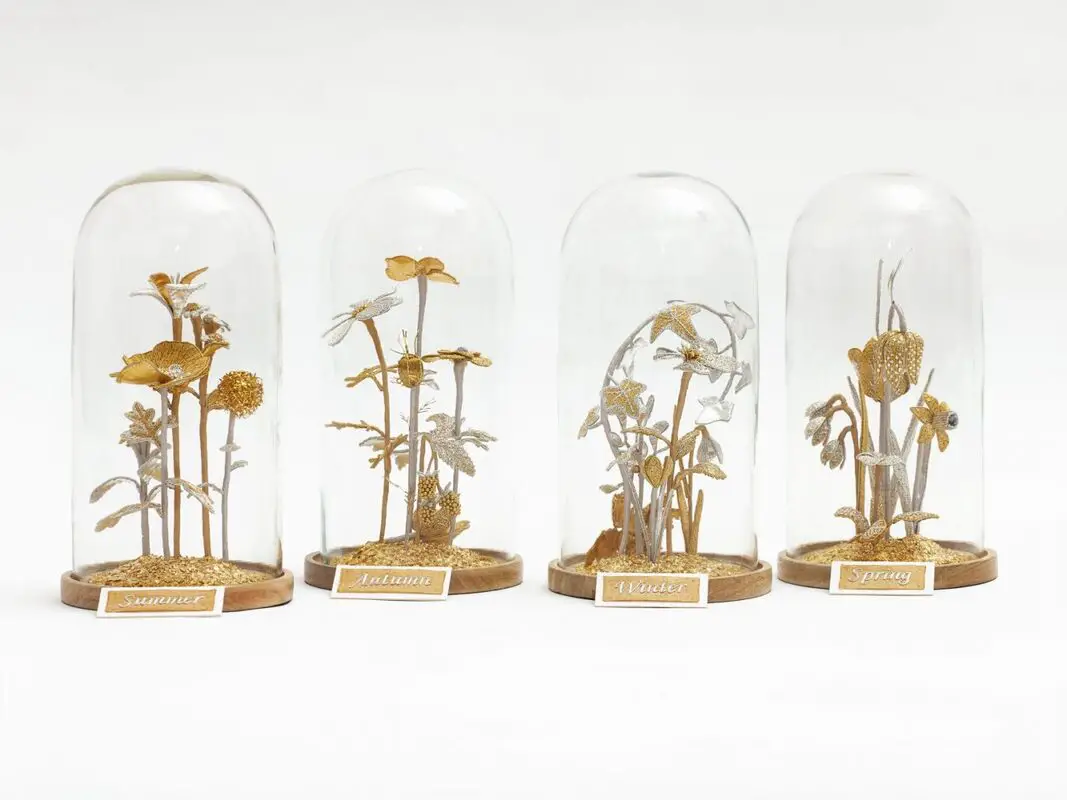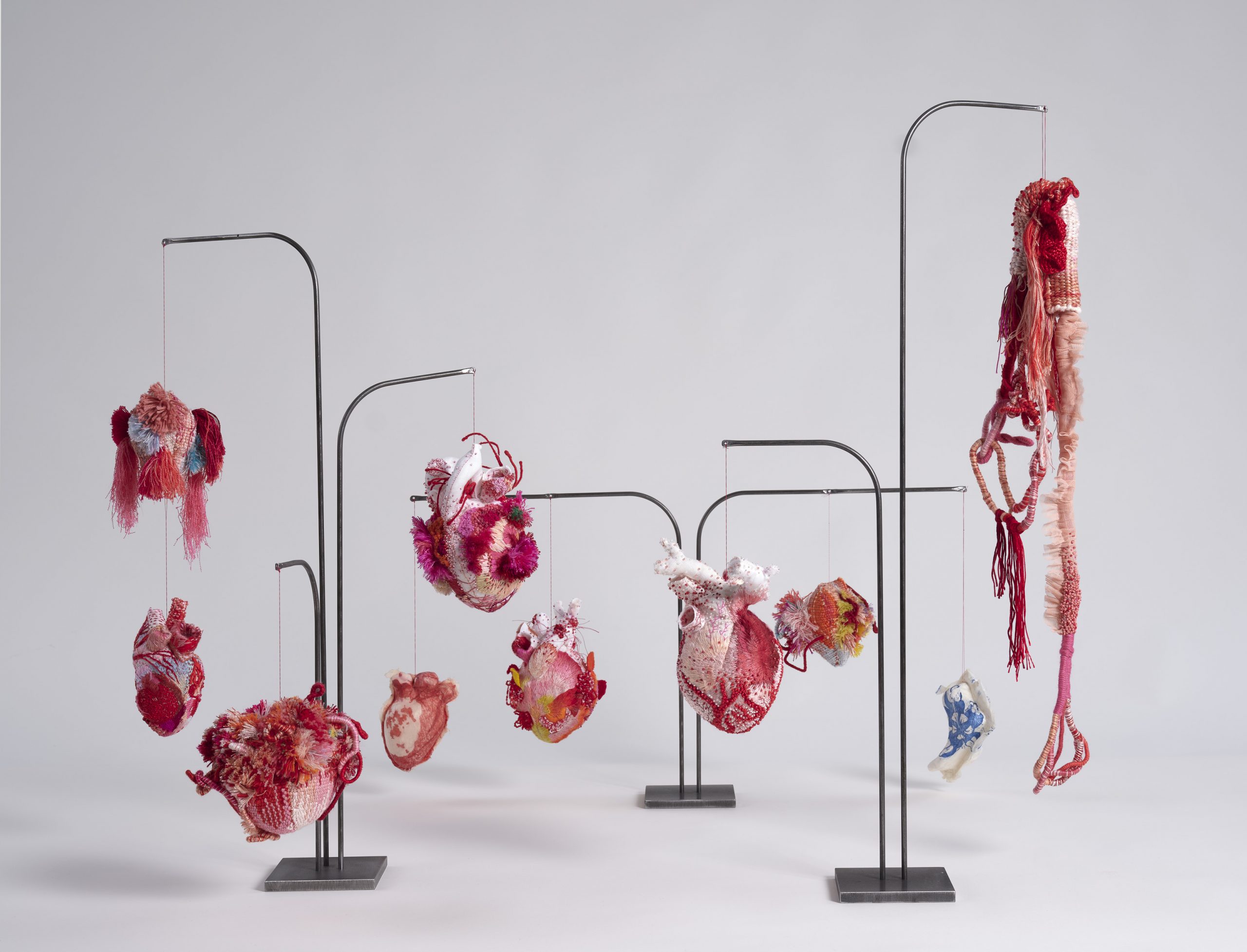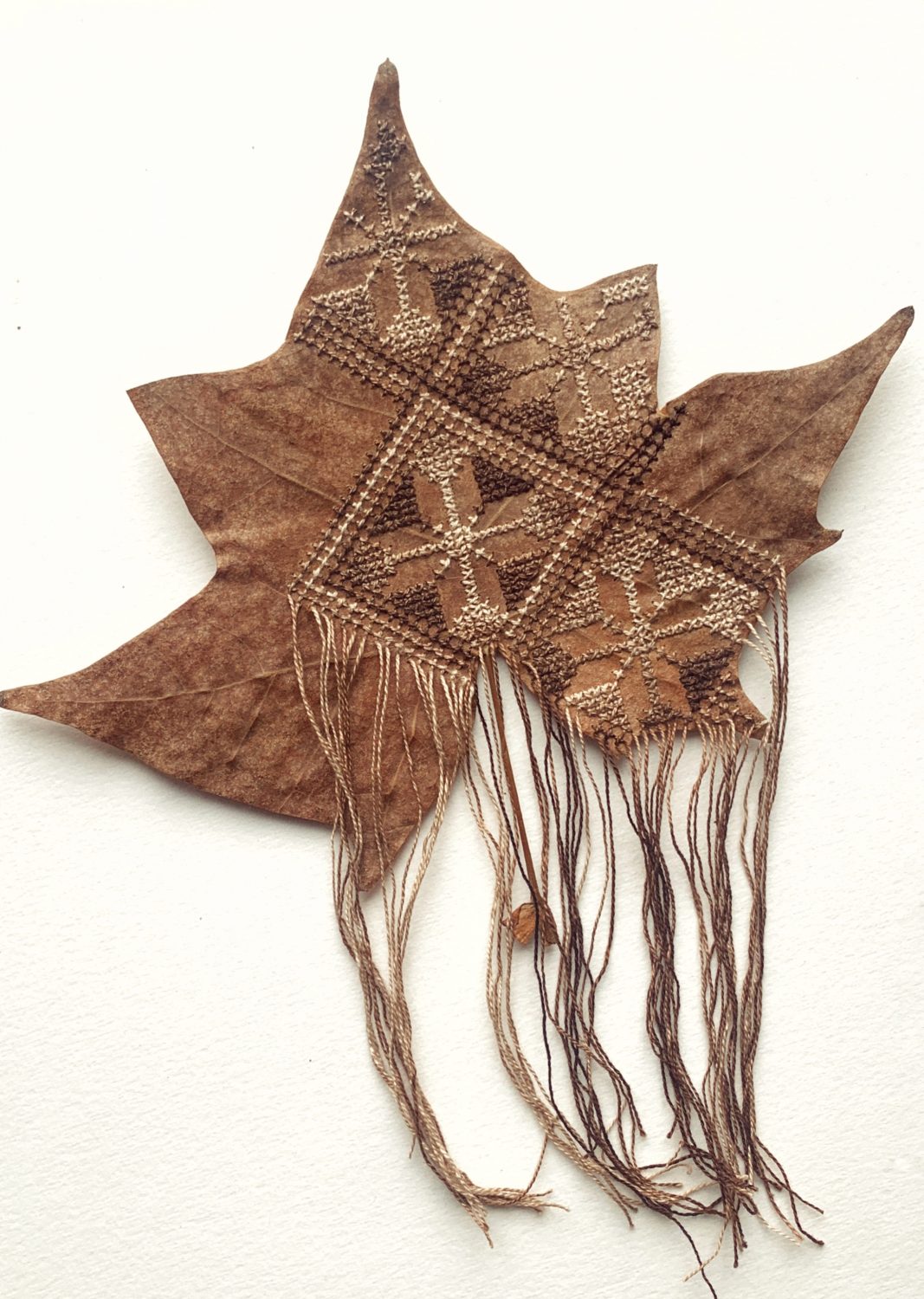The Lost Dress of Elizabeth I
Hanging on the wall of a small rural church in Bacton, Herefordshire lies a sumptuous piece of embroidered of fabric, it had been placed there 100 years earlier once it had been retired as the church’s altar cloth. Exquisitely embroidered insects, plants, birds and flowers in silk and gold thread weave their way across a background of the finest chamblet silk, woven with strips of beaten silver. It is no wonder the parishioners kept such care of this piece once it had been withdrawn from its role in the church.
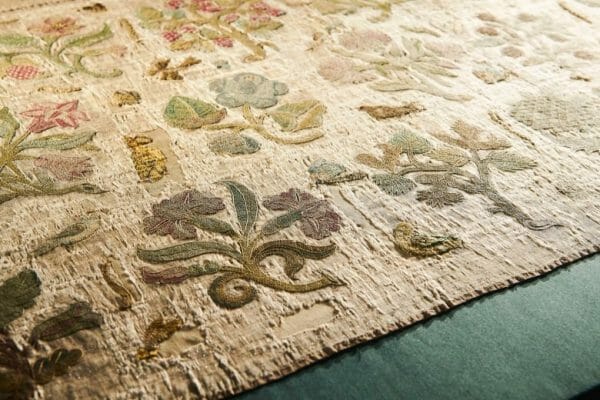
In 2015 Eleri Lynn, the curator of the Royal Ceremonial Dress Collection, happened across a photograph of this intriguing piece when she was researching Welsh connections to the Tudor Court. Noticing that it appeared to be late sixteenth century and something special she immediately went to have a look. She noted that it had evidence of seams and pattern cutting, which made her realise this was not always an altar cloth.
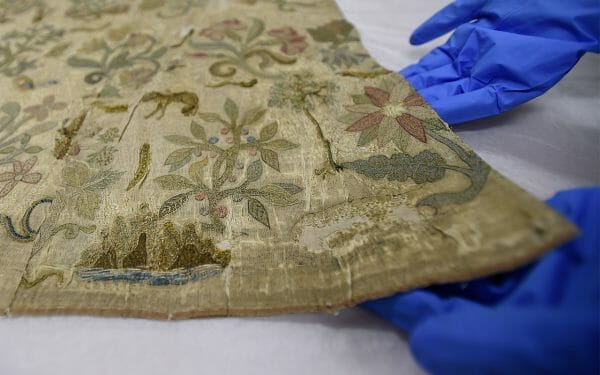
I’ve mentioned in a previous post (you can find it here) about the ‘Sumputary Law’ bought in by Henry VIII, this was a law that attempted to restrict the sumptuousness of dress in order to make clear the distinctions between levels of society. Within this law, cloth of silver and gold was reserved only for immediate Royal Family or the very upper echelons of society.
So it was now clear that this beautiful embroidered garment that had been repurposed into the Bacton Church altar cloth was something very special indeed. So Eleri Lynn bought it to Hampton Court, where it was the subject of extensive research and conservation. Many experts examined it, the dyes and materials were analysed and the patterns explored – all evidence pointed to Elizabeth I as its owner.
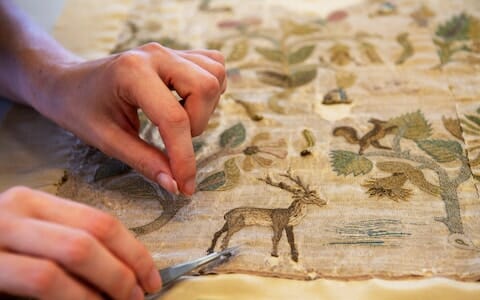
It also bears a quite a resemblance to the bodice that Elizabeth I is seen wearing in the Rainbow Portrait, a highly symbolic painting that is teeming with majesty and designed to dazzle, inspire and intimidate various audiences. Although it is impossible to conclusively prove this curious relics origins, there are records and documents that Elizabeth gave items of her old clothing to her favourites. One of her favourites, was noblewoman and confidant Blanche Parry who was born in the village of Bacton around 1508 and was one of the church’s parishioners. She remained in the queen’s service until her death in 1590. So it is not beyond the realms of possibility that this beautiful embroidery ended up adorning Blanche’s parish church.

If this is indeed this case, it is fitting that it has now come back to Hampton Court, its original home, where Elizabeth could have worn it more than 450 years ago. ‘The Lost Dress of Elizabeth I’ is currently being displayed alongside the Rainbow Portrait, which is on loan from Hatfield House, and other examples of embroidery from the same period.

